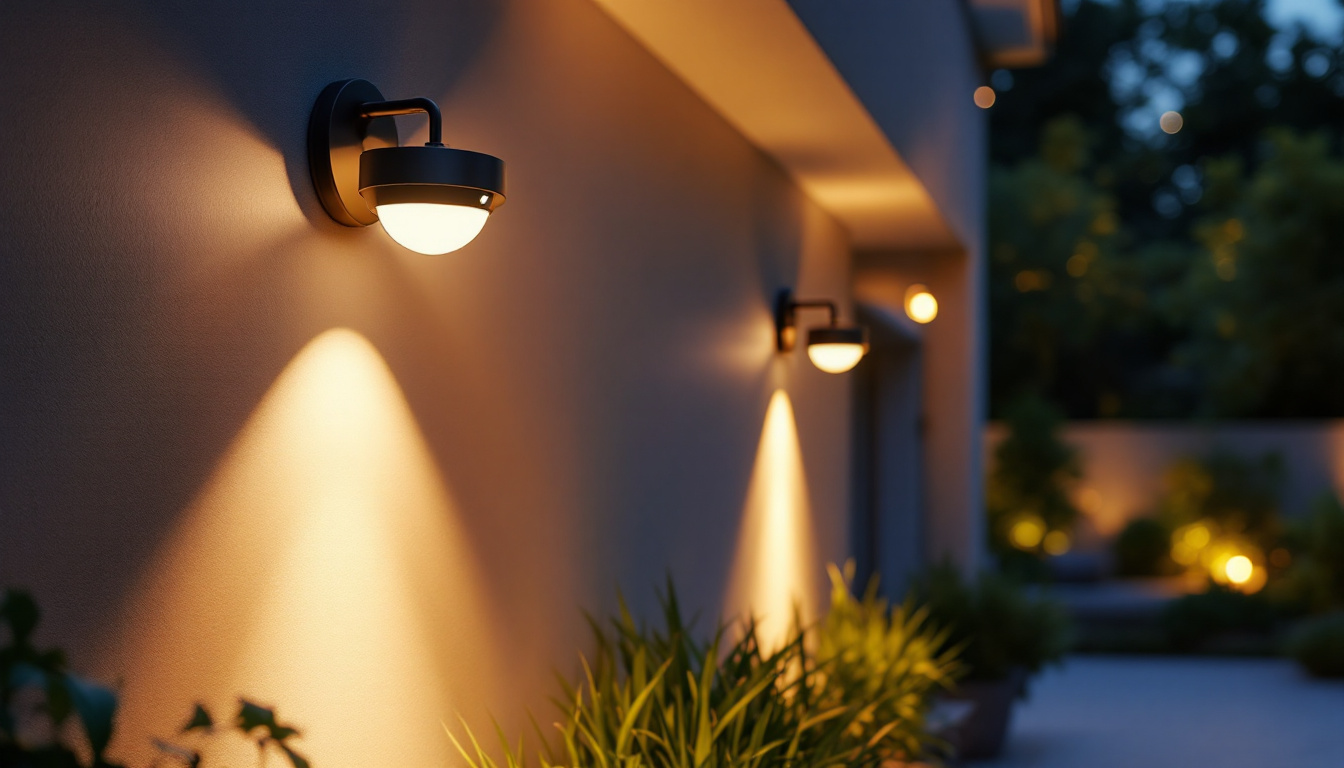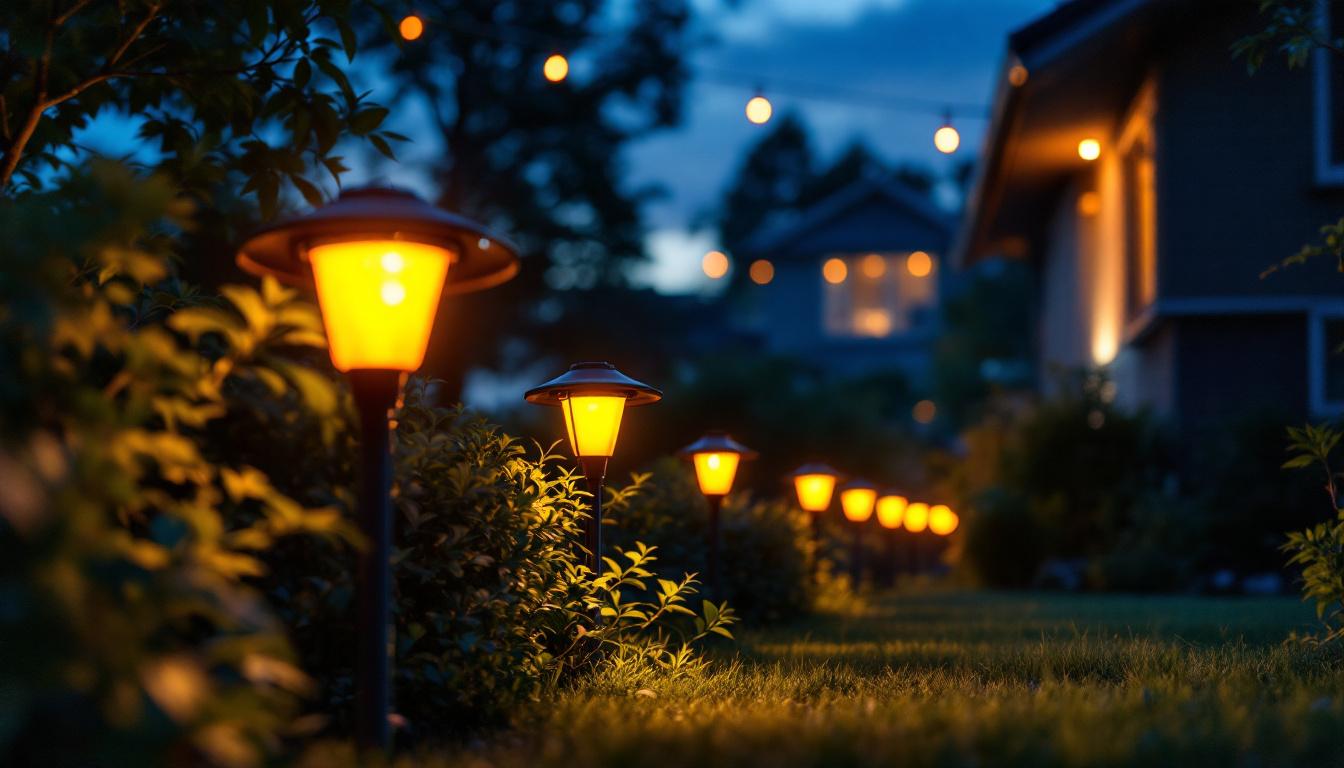
In the realm of outdoor lighting, motion detector fixtures have emerged as a pivotal element for both safety and efficiency. For lighting contractors, understanding the significance of these fixtures is essential not only for meeting client expectations but also for enhancing overall project value. This article delves into the various aspects of motion detector light fixtures, their benefits, and why they should be a staple in any lighting contractor’s toolkit.
Motion detector light fixtures are designed to automatically turn on when they detect movement within a certain range. This technology has evolved significantly, offering various options for contractors to consider when designing outdoor lighting systems. The integration of motion sensors into lighting fixtures provides a seamless solution for enhancing security and convenience. These fixtures not only deter potential intruders but also illuminate pathways and entryways, making them safer for residents and visitors alike.
There are primarily two types of motion sensors used in outdoor lighting: passive infrared (PIR) sensors and dual-tech sensors. PIR sensors detect changes in infrared radiation, which is emitted by moving objects, particularly warm ones like humans and animals. On the other hand, dual-tech sensors combine passive infrared and microwave technology, providing a more comprehensive detection range. This combination allows for greater accuracy in detecting motion, reducing the likelihood of false triggers caused by environmental factors like wind or passing cars.
Understanding the differences between these sensors is crucial for lighting contractors. PIR sensors are typically more cost-effective and energy-efficient, making them suitable for residential applications. In contrast, dual-tech sensors are ideal for larger commercial spaces where reliability and accuracy are paramount. Additionally, contractors should be aware that dual-tech sensors can be particularly useful in areas with high foot traffic, as they can effectively differentiate between human movement and other non-threatening motion, ensuring that lights activate only when necessary.
When selecting motion detector light fixtures, contractors should consider several key features. adjustable sensitivity settings allow users to customize the detection range, which can be particularly useful in residential settings where pets might trigger lights unnecessarily. Additionally, the ability to adjust the duration for which the light remains on after activation can enhance user satisfaction. Some fixtures even offer programmable settings that allow users to set specific times for activation, providing an extra layer of customization based on individual needs.
Furthermore, many modern fixtures come equipped with integrated LED technology, offering energy efficiency and longevity. This not only reduces the frequency of bulb replacements but also contributes to lower energy bills for clients, making it a selling point for contractors. Moreover, advanced models may include features such as dusk-to-dawn sensors, which automatically adjust the lighting based on ambient light levels, ensuring that the fixtures operate only when needed. This not only conserves energy but also enhances the overall functionality of the lighting system, making it a smart choice for both residential and commercial applications.
Incorporating motion detector light fixtures into outdoor lighting designs offers numerous advantages. These benefits extend beyond mere convenience, impacting safety, energy efficiency, and overall client satisfaction.
One of the primary reasons homeowners and businesses invest in motion detector lighting is the enhanced security it provides. By illuminating areas when movement is detected, these fixtures deter potential intruders and provide peace of mind for property owners.
For contractors, emphasizing the security benefits of motion detector lights can be a compelling selling point. Clients are often willing to invest in solutions that protect their homes and businesses, making it essential for contractors to highlight these features during consultations. Additionally, the presence of motion-activated lights can create a perception of vigilance and care, further discouraging criminal activity. Many modern systems also come equipped with smart technology, allowing homeowners to monitor their property remotely, receiving alerts on their smartphones when motion is detected, thus enhancing their sense of security even when they are away.
Energy efficiency is another significant advantage of motion detector light fixtures. By only activating when needed, these lights reduce unnecessary energy consumption. This not only contributes to lower utility bills but also aligns with the growing trend toward sustainable and eco-friendly solutions.
Contractors should educate clients about the long-term savings associated with these fixtures. While the initial investment may be higher than traditional lighting options, the reduced energy costs and extended lifespan of LED bulbs can lead to substantial savings over time. Furthermore, many municipalities offer rebates or incentives for installing energy-efficient lighting, which can offset installation costs. As energy prices continue to rise, the appeal of motion detector lights becomes even more pronounced, allowing homeowners to enjoy well-lit spaces without the worry of skyrocketing energy bills. This combination of immediate and long-term financial benefits makes motion detector lights an attractive option for both residential and commercial properties.
Installing motion detector light fixtures requires careful planning and consideration. Understanding the specific needs of the space and the preferences of the client is paramount to a successful installation.
Proper placement of motion detector lights is crucial for maximizing their effectiveness. Contractors should assess the layout of the property to identify areas that require illumination, such as entryways, driveways, and dark corners. Additionally, the height at which the fixtures are installed can significantly impact their detection capabilities.
It is also essential to consider potential obstructions that may interfere with the sensor’s range. Trees, fences, and even the architecture of the building can affect how well the motion detector functions. A thorough site assessment can help contractors determine the best locations for installation.
In many cases, motion detector light fixtures require a dedicated power supply. Contractors must ensure that the wiring is adequate for the fixtures being installed, taking into account the voltage and amperage requirements. Additionally, understanding local electrical codes and regulations is vital to ensure compliance and safety.
For those unfamiliar with electrical work, collaborating with a licensed electrician may be necessary. This partnership can enhance the overall quality of the installation and ensure that all safety standards are met.
Once the installation is complete, educating clients about the operation and maintenance of their new motion detector light fixtures is essential. Proper guidance can enhance user satisfaction and prolong the lifespan of the fixtures.
Clients should be informed about how to adjust the sensitivity and duration settings of their motion detector lights. Providing a simple user manual or conducting a brief tutorial during the installation can empower clients to customize their lighting experience according to their preferences.
Additionally, contractors should explain the importance of keeping the sensor lens clean and free from obstructions. Dust, dirt, and debris can hinder the sensor’s performance, leading to frustration for the user. Regular maintenance checks can help ensure that the fixtures are functioning optimally.
Encouraging clients to schedule periodic maintenance checks can help prolong the life of their motion detector light fixtures. This may include replacing bulbs, checking wiring connections, and inspecting the sensors for any signs of wear or damage.
Contractors can also offer ongoing support, such as providing a maintenance plan or service contract. This not only enhances client relationships but also establishes the contractor as a trusted expert in outdoor lighting solutions.
The outdoor lighting market is continuously evolving, with new trends and innovations emerging regularly. Staying informed about these developments can give lighting contractors a competitive edge.
One of the most significant trends in outdoor lighting is the integration of smart technology. Many motion detector light fixtures now come equipped with Wi-Fi connectivity, allowing users to control their lights remotely via smartphone apps. This feature adds an extra layer of convenience and security, appealing to tech-savvy clients.
Contractors who understand and can implement these smart solutions will be better positioned to meet the demands of modern consumers. Offering smart lighting options can set a contractor apart from competitors and cater to a growing market segment.
As sustainability becomes a priority for many consumers, lighting contractors should consider environmentally friendly options. Energy-efficient LED fixtures not only reduce energy consumption but also have a lower environmental impact compared to traditional incandescent bulbs.
Moreover, educating clients about the environmental benefits of motion detector lights can resonate with those who prioritize eco-friendly solutions. This approach can enhance the contractor’s reputation as a responsible and forward-thinking professional.
As the demand for outdoor lighting solutions continues to grow, the importance of motion detector light fixtures cannot be overstated. For lighting contractors, these fixtures represent an opportunity to enhance security, promote energy efficiency, and provide clients with a modern, convenient lighting experience.
By understanding the various types of motion sensors, installation considerations, and market trends, contractors can position themselves as experts in the field. Embracing innovation and sustainability will not only benefit clients but also contribute to the contractor’s long-term success in the competitive lighting industry.
In conclusion, incorporating motion detector light fixtures into outdoor lighting designs is not just a trend; it is a necessity for lighting contractors aiming to deliver exceptional value to their clients. As technology advances and consumer preferences evolve, staying informed and adaptable will be key to thriving in this dynamic market.
Ready to elevate your outdoor lighting projects with the latest in motion detector technology? Look no further than LumenWholesale, where we provide lighting contractors with the highest quality, spec-grade lighting products at unbeatable wholesale prices. Say goodbye to local distributor markups and hello to superior lighting solutions that meet the highest industry standards. With our hassle-free bulk buying and free shipping, you can ensure your projects shine with reliability and performance, all while keeping costs down. Don’t compromise on quality or value—choose LumenWholesale for the perfect blend of affordability and convenience. Wholesale Lighting at the Best Value is just a click away.

Discover how dining light pendants can enhance efficiency for lighting contractors.

Discover the top LED flood lights for outdoor spaces with insights from leading lighting contractors.

Discover why solar lights in orange hues are becoming a crucial choice for lighting contractors.

Discover essential tips and common pitfalls for lighting contractors undertaking LED retrofits.